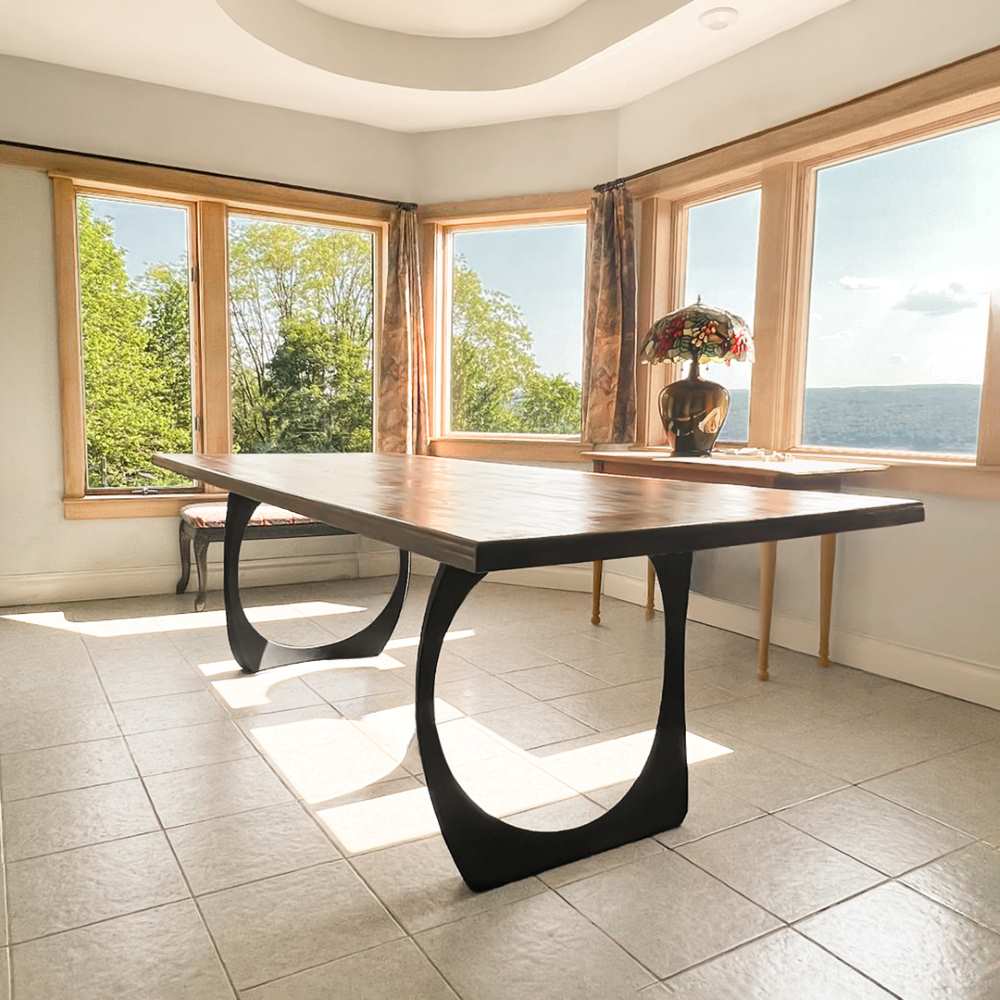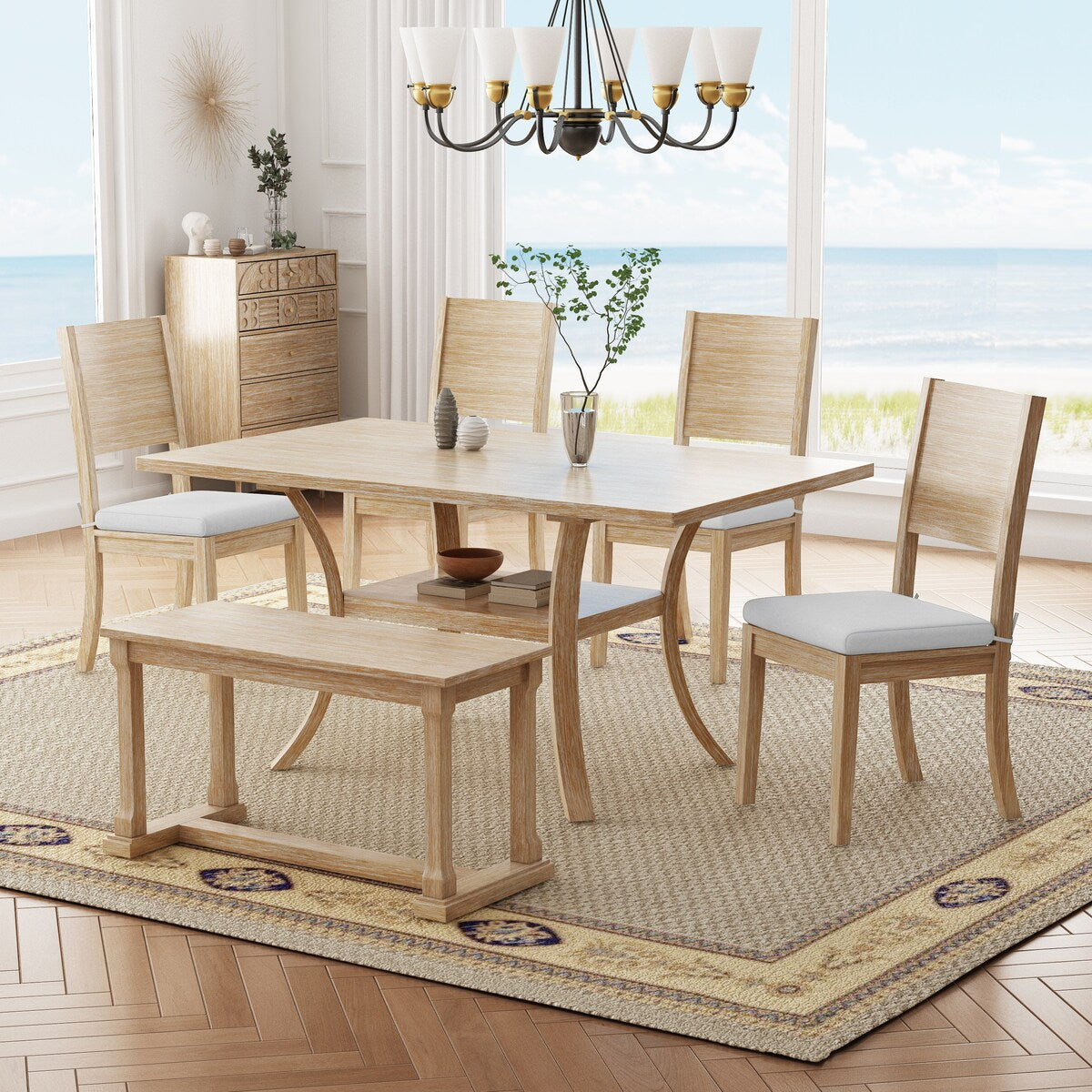Find the Ideal Dining Room Table Legs for Any Interior Design Style
Find the Ideal Dining Room Table Legs for Any Interior Design Style
Blog Article
From Standard to Modern: Discover the Ideal Dining-room Table Legs for Your Style
The option of dining-room table legs plays a pivotal role in specifying the general personality of your area, bridging the space between typical workmanship and modern-day appearances. While timeless layouts such as cabriole and transformed legs evoke a feeling of ageless refinement, contemporary designs like hairpin and geometric choices provide a possibility for striking visual interest. Reviewing the ideal balance between these styles needs a nuanced understanding of your existing decoration and individual taste. As you take into consideration these components, the inquiry remains: how can you flawlessly integrate these diverse leg styles to create an unified dining experience?
Comprehending Table Leg Styles
The range of dining-room table leg designs can considerably affect both the appearances and performance of the room. Each leg design contributes unique aesthetic elements and functional features, providing to varied layout choices and usage needs. Understanding these designs is important for picking the best table that straightens with your total indoor layout vision.
As an example, conical legs supply a clean, classic look that can boost a room's beauty, while stand bases offer stability and maximize legroom, making them ideal for smaller spaces. Hairpin legs, a characteristic of mid-century contemporary design, introduce a commercial flair, enabling an airy, open feeling. In a similar way, trestle legs stimulate rustic beauty, providing robust support and a feeling of eternity.
Additionally, the choice of products plays a significant duty. Wooden legs can bring heat and texture, whereas steel alternatives typically share a smooth, modern ambiance. Ultimately, recognizing table leg styles is necessary for creating a natural eating area that reflects personal design while making certain usefulness and convenience. By attentively thinking about these components, you can enhance both the aesthetic and functional allure of your dining room.
Traditional Table Leg Options
When choosing dining room table legs, conventional alternatives usually symbolize timeless beauty and craftsmanship. These layouts mirror an abundant heritage and a commitment to high quality, making them perfect for those who appreciate traditional looks.
One of one of the most renowned typical leg designs is the cabriole leg, defined by its stylish curved form. This design commonly includes decorative carvings and is most frequently discovered in Queen Anne and Chippendale furniture. Another popular choice is the transformed leg, which flaunts a series of smooth, rounded shapes that provide a timeless look while preserving stability.
Furthermore, the straight leg, while easy, provides a strong and unadorned framework that can mix perfectly with a selection of tabletop styles. For those attracted to ornate describing, claw-and-ball feet legs evoke a feeling of grandeur and can work as a stunning focal point in any eating room.
Lastly, pedestal bases, although not strictly legs, offer an alternative traditional choice that enables enough legroom and can be perfectly sculpted. Each of these conventional leg styles adds to the general setting of an eating room, marrying feature with aesthetic allure.

Modern Table Leg Layouts
Modern table leg styles provide a varied series of styles that stress clean lines and cutting-edge products. These layouts often focus on capability while working as striking prime focus within a dining space. Minimal visual appeals are widespread, with legs crafted from products such as steel, glass, and crafted timber, which add to a contemporary and airy feel.
One prominent style is the hairpin leg, identified by its slender, conical structure that provides security without frustrating the table top (dining room table legs). This design is usually discovered in mid-century modern-day furniture and can easily enhance different table forms. An additional trend is making use of geometric forms, where legs may handle angular or unbalanced forms, adding aesthetic rate of interest and a touch of artistry

Blending Styles for Distinct Spaces
Usually, property owners seek to create unique dining rooms that show their individual design by blending various design elements. This strategy permits the unification of varied visual appeals, resulting in a harmonious yet unique setting. Combining a rustic wood table with sleek, modern steel legs can produce an appealing comparison that elevates the area's total charm.
Additionally, incorporating vintage table legs with modern tabletops can evoke a feeling of history while maintaining a modern-day sensibility. Such combinations not just showcase specific taste yet additionally urge imagination, allowing home owners to curate an area that really feels both personal and inviting.
Shade plays a vital role in this mixing process; choosing table legs that enhance or contrast with the click here to read existing color design can boost blog visual passion. For instance, whitewashed legs can soften the daring of a dark table surface, developing a balanced visual.
Tips for Picking the Right Legs
Selecting the right table legs is necessary for achieving both capability and aesthetic charm in your eating area. Begin by taking into consideration the overall style of your area. Conventional settings take advantage of legs that feature elaborate carvings or turned styles, while modern spaces may require sleek, minimalist designs.
Following, assess the height and stability of the legs. dining room table legs. Common table vary in between 28 to 30 inches in elevation, so guarantee the legs match this dimension for convenience. Additionally, robust materials, such as wood or steel, can boost security and durability
Examine the leg shape also-- alternatives include directly, tapered, or pedestal styles. Straight legs use a timeless appearance, while conical legs can add a touch of beauty. Pedestal bases supply enough legroom and are suitable for smaller sized rooms.
Conclusion
In summary, selecting the ideal eating space table legs requires mindful consideration of both traditional and modern designs. By harmonizing leg style, elevation, and product with the general decoration, a natural and inviting environment can be achieved.
The variety of eating space table leg styles can dramatically affect both the looks and functionality of the space. Ultimately, comprehending table leg styles is necessary for developing this link a natural eating location that reflects individual design while making sure usefulness and comfort.One of the most legendary typical leg designs is the cabriole leg, characterized by its graceful bent form. Straight legs offer a classic look, while tapered legs can include a touch of style.In summary, picking the optimal eating room table legs calls for cautious factor to consider of both conventional and modern-day styles.
Report this page